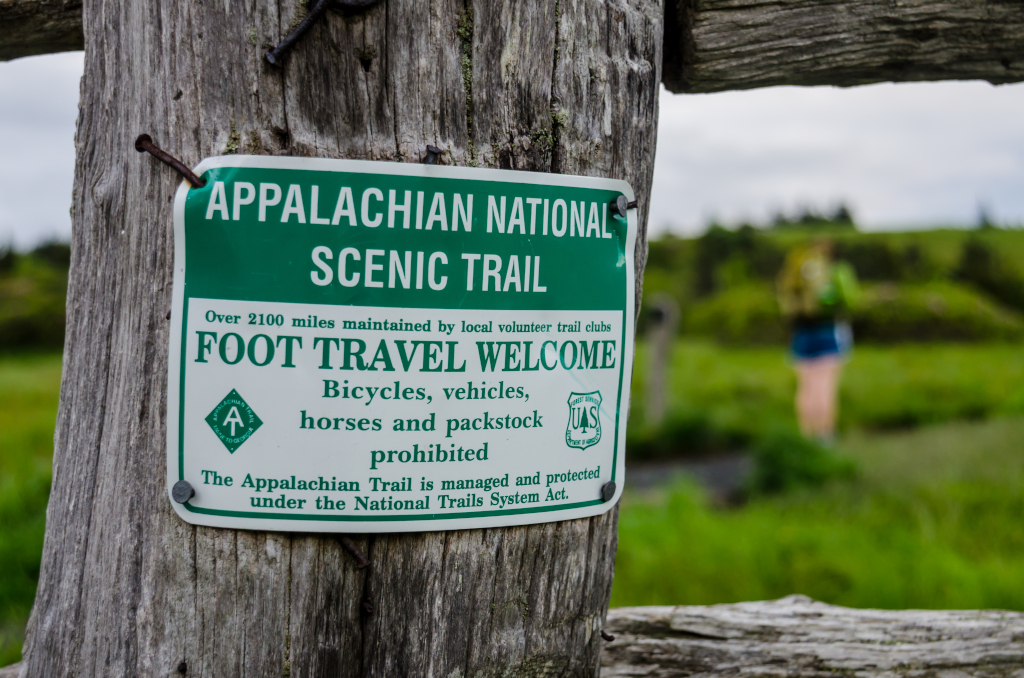
Hiking the Appalachian Trail (AT) with dogs is a bucket list item for many people. For others, it’s an opportunity to spend time with friends and family while exploring new places. And for some, thru-hiking the trail is a way of life.
One thing all hikers have in common, though, no matter their experience level, is that they need to be prepared both physically and mentally before setting off on this journey of a lifetime.
The Appalachian Trail stretches more than 2,000 miles from Georgia to Maine and is one of the most popular and longest hiking destinations. And thru-hiking the AT isn’t an easy task, which can take up to six months to complete. If you’re not well prepared for this endeavor, it can quickly become a miserable experience.
Read More: Ultimate Guide To Hiking With Your Canine [With Infographic]
Your Dog Will Need A Thorough Vet Checkup First
Before embarking on this journey with your dog, you first need to get your pup a veterinary exam, even if they are in good physical shape.
That is to ensure that your canine friend doesn’t have any underlying health conditions that might pose problems on the trail. Not only that, but you will need to have them get up-to-date on all their vaccinations and boosters, including rabies, distemper, leptospirosis, etc.
Additionally, your canine needs to have flea and tick treatment before hitting the trail. Dogs can pick up ticks easily during a walk through the woods or other tall grasses. If you don’t treat your four-legged friend ahead of time, not only will these critters bother them, but they may suffer an allergic reaction as well.

The Basics: Understanding The Written And Unwritten Rules Of The Trail
Before you set foot on the Appalachian Trail, make sure you’re well-versed in the trail’s written and unwritten rules.
For example, dogs are not allowed on certain parts of the trail, including Baxter State Park in Maine, Trailside Museums in New York, and Great Smoky Mountains National Park in Tennessee and North Carolina.
There are unwritten rules of the trail that all thru-hikers should be aware of as well. For one thing, it’s common courtesy to pick up after your dog. And when you encounter other trail users, leash and get your canine to heel immediately to allow them to pass safely.
Preparing Your Dog For Thru-Hiking
One of the most difficult challenges about hiking the Appalachian Trail is that it includes almost every type of terrain imaginable. So before even setting foot on the trail, your dog needs to be prepared for anything that lies ahead.
If possible, start building up their stamina and endurance as early as possible. This means taking short and easy frequent walks on trails and gradually increasing the length and difficulty until they’re ready for such an arduous trip.
In addition to physical conditioning, your canine also needs mental preparation. Since the journey will require your pup to adjust and deal with constantly changing surroundings and circumstances, make sure they feel safe in all situations by introducing them to new places throughout their life and socializing them with people and other dogs.
Read More: Best Dog To Hike The Appalachian Trail
Your Dog Must Have Good Behavior
The Appalachian Trail is certainly no place for bad behavior.
If your dog has behavioral problems like aggression, this can cause problems for everybody involved and even put you in danger.
So before embarking on this journey with your pooch, make sure they’re well-behaved and have excellent basic obedience, in which they need to be able to respond to commands like sit, stay, wait, come, and heel when told to.
Read More: The Basics Every Trail Dog Should Know
Research The Appalachian Trail
Another critical thing to do is research and learn all about the AT by talking with other thru-hikers, reading the maps on Guthooks Guides (Atlas), and checking out online forums like WhiteBlaze.
Inform yourself about the nearby towns you’ll be passing through during your journey for resupply. This also allows you to find suitable places to stay along the way and make reservations at these accommodations ahead of time.
Additionally, learn as much as possible about where campgrounds are on or near the Appalachian Trail in case those dog-friendly shelters are fully booked.
You would also need to learn how to read paper maps and make sure you can understand them just in case you don’t have cellular phone coverage to use GPS or your phone’s battery unexpectedly dies.

Pack Both You And Your Dog's Gear Carefully
It’s important not only for your dog’s well-being but also for yours that you carefully pack for thru-hiking with your canine companion. The Appalachian Trail is one of the longest trails in the world, so there’s no room for extra weight or unnecessary gear in your backpack.
With that in mind, only bring the essential items for your dog and yourself, including food, dog travel water bottles, leashes, and treats. When it comes to your dog’s food, I recommend using high-quality, calorie- and protein-dense dehydrated food, as they are lightweight and won’t weigh down your pack.
There are doggie backpacks out there, which will be a good investment as that allows your thru-hiking furry companion to carry their own essentials, thereby taking some of the weight off your back.
Read More: The Essential Dog Hiking Gear List
Consider Mailing Yourself Food The Entire Trip
You’ll see many hikers resupply themselves at stores along the trail while thru-hiking. Although you can surely do the same, it is expensive and impractical since there’s no guarantee that the stores will have everything you need.
Another way to resupply yourself is to ask your friends or family to meet you and drop off food. However, that’s not always possible. Plus, that may be too much of a hassle for them, especially if they live far away.
So instead, I suggest sending packages of food drops ahead of time. This allows you to purchase in bulk back home at lower prices and have more variety rather than buying expensive items throughout your journey. One thing, though, is you have to plan carefully and make sure you have enough extra room in your backpack for all the food that you’ll be getting mailed from home.
Pay Extra Attention To Your Dog's Paws
A thru-hike with your dog will be especially hard on their paws, causing them discomfort as they try to navigate rough and uneven surfaces. Plus, there will be a lot of high-impact landings, thorns, and sharp, jagged rocks that can cut your dog’s feet.
So, just as with your own feet, it’s essential to do everything you can to help protect theirs. This includes putting special doggie hiking boots on your pup or applying protective wax to their feet. It also means to keep their toenails trimmed, so they don’t catch onto things and cause injuries.
Speaking of injuries, be sure to bring a first aid kit for your dog just in case they get stung by a bee or cut themselves on sharp rocks. This is especially true if you’ll be thru-hiking during certain times of the year when bugs (i.e., ticks) are prevalent, which can pose serious threats to your dog.
Read More:

Watch Out For Ticks
Ticks are tiny creatures, so it’s easy not to notice them. But make no mistake about it, as these pests can cause serious problems, like Lyme disease and Rocky Mountain spotted fever, which can be deadly for dogs and people alike.
So you have to take precautions and do whatever you can to prevent both you and your dog from getting any nasty tick bites.
To protect your pooch from these critters, make sure they’re wearing a tick-repellent collar at all times when in the woods, and regularly check them for any ticks that may have latched onto them. Plus, you’ll want to have a tick key on hand for the apparent reason.
As for yourself, wear long-sleeved shirts, pants, and high boots. You would also want to wear light-colored clothing that makes spotting ticks easier. It may seem like overkill, but think of all the times you wouldn’t have gotten bitten by mosquitoes had you been wearing full-body protective clothing.
Maintain A Good Pace And Routine While Hiking
With this backpacking trip with your dog, it’s vital not to take things too fast or do too much every day as it is full of unforgiving terrain, including steep ascents, rocky paths, and exposed ridges that can really challenge you both physically and mentally.
If you want to make sure both you and fido are going to make it to the end, don’t rush through and speed up your hiking just to get somewhere sooner, but rather stick to a good pace so that you’re both able to do what’s required for an extended period without any issues.
How Much Does It Cost To Thru-Hike The Appalachian Trail With A Dog?
The cost of thru-hiking with dogs will vary greatly depending on many factors, so it’s difficult to give an exact number.
That said, according to the Appalachian Trail Conservancy, the average hikers spend is $1,000 per month, although it cost me about $1,200. This includes gear upgrades (i.e., a backpack, boots), food, transportation, accommodations.
And, of course, it will cost you more to bring your dog than it would be to hike alone. For myself, I spend roughly an extra $500 a month on Bailey (my Border Collie). So, with all this in mind, I would say that the total cost to thru-hike the Appalachian Trail with your dog is somewhere between $1,500 – $2,000 per month.
One Last Piece Of Advice
Thru-hiking the Appalachian Trail with your dog is not easy, but it’s also not impossible.
So if you are dedicated and ready to embark on a challenging yet fulfilling once-in-a-lifetime adventure, then go out there and give it your best! And just remember that when things get tough, staying positive is what will keep you going and help you get through the day.
I hope this article has given you some good information on how to thru-hike the Appalachian Trail with your dog. If you like this post, be sure to share it with your friends and family.
Thanks for reading!

